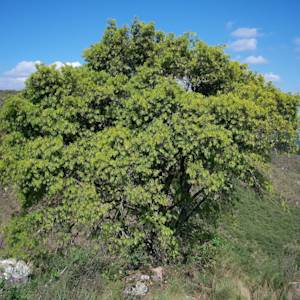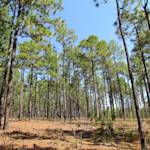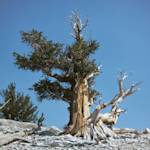Monkey puzzle tree
2020 CE • Chile and Argentina
"The monkey puzzle tree is an evergreen species of conifer from the temperate rainforests of south central Chile and adjacent areas in Argentina. In Chile, the species distribution is divided between two distinct ecosystems; the Andes, and due to its high salt resistance, the coast . . . The species is of great historical and social importance in its native range. Piñones are edible and form an important food source for the indigenous Pehuenche people of central south of Chile. Monkey puzzle wood is also prized as timber due to its durability and resistance to fungal decay. It has been used for beams in buildings, bridges, piers, roofs, furniture, boat structures, veneers and plywood. As a result of its natural beauty and striking appearance the species has been adopted as a flagship for a number of National Parks in Chile where it is also the National Tree . . . Despite its popularity in garden collections, in its native habitat, monkey puzzle trees are highly threatened. The species exist within a habitat that is vulnerable to fire, as a result of recurrent volcanism. The species has evolved within this environment and as such, establishes well under the partial shade of forests dominated by Nothofagus species particularly following fires. Similarly, the monkey puzzle tree is often one of the first ‘colonists’ of rocky sites following a burning event. However fire, logging and grazing have led to rapid destruction of the monkey puzzle’s habitat, making it more difficult for the species to cope with repeated burning events. During 2001-2002 20,000 hectares of native araucaria forest were dramatically burnt in southern Chile affecting more than 50% of arucaria forest in Tolhuaca National Park and Malleco National Reserve . . . Despite the logging ban put in place in 1990, other pressures remain high. Threats to the species include deforestation, grazing, seed collection and expansion of plantations with exotic trees all of which are exacerbated by fire (some of which are anthopogenic) and low levels of natural regeneration."
"Monkey Puzzle," Global Trees Campaign, 2020.
Image: Monkey puzzle tree fruit, Ruth Hartnup via Flickr, CC BY 2.0 DEED Attribution 2.0 Generic


Learn about Maya Lin’s fifth and final memorial: a multi-platform science based artwork that presents an ecological history of our world - past, present, and future.

Discover ecological histories and stories of former abundance, loss, and recovery on the map of memory.

Learn how we can reduce our emissions and protect and restore species and habitats – around the world.

See how art can help us rethink the problems we face, and give us hope that each one of us can make a difference.

Help make a global memorial something personal and close to home. Share your stories of the natural world.


